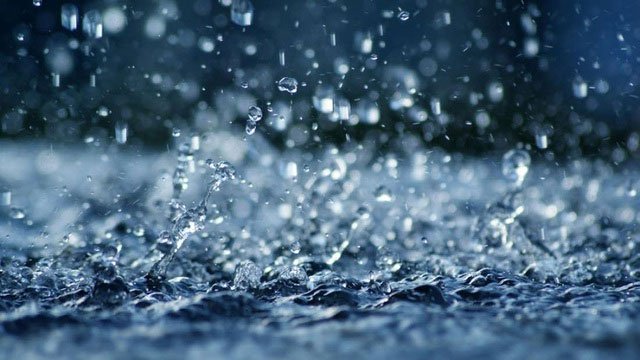'Turning' raindrops into energy
Scientists have found a new way to use the energy of direct droplets.
The kinetic energy of the falling water has been converted into electricity since the 1870s. However, current hydroelectric systems depend on rain falling at high altitudes and regrouping into rivers to achieve a volume large enough to be harvested. effective.

Rainfall can also generate energy.
Recently, Professor Wang Zuankai from Hong Kong said: "The kinetic energy of dragging water falls is due to gravity and can be considered free and renewable".
There have been many attempts to create something similar in the past, along with efforts to harvest the chemical energy of materials dissolved in raindrops. All are so ineffective that they are only suitable as toys or curiosity, not as a source of useful energy.
However, Wang Lau's version may not be ready to power a city, but with 100 times the energy density of its predecessors, it can be used in practice.
Wang and his co-authors have announced their success and demonstrated their generator potential by dripping water onto polytetrafluoroethylene membranes on indium tin oxide substrates. As every drop of water spreads on the membrane, it connects the aluminum electrodes, allowing the charges that accumulate in the membrane to flow into electricity.
When each drop falls into the transmitter, it provides enough power to light up 100 commercial LEDs. Forms of renewable energy usually produce small voltages.
However, Wang stated: "Our study shows that a reduction of 100 microlitres (1 microlitre = a millionth of a liter) of water released from a height of 15 cm can generate voltages above 140V."
Using tap water, Wang achieved a maximum energy density of 50 watts per square meter, although rainwater was somewhat lower.
The authors calculate they are converting 2.2% of each drop of kinetic energy into electricity, so there is plenty of room for improvement. Wang contends that the umbrellas are covered with suitable films so that if you get caught in the rain, at least you can charge your phone.
The remaining obstacle is that the system works with droplets of the same size falling from the right height that may not work well under different conditions. In particular, the authors acknowledge that the decrease in surface charge can reduce the efficiency of a generator over time.
- Electricity generated by falling rain
- Raincoats glow in the rhythm of falling rain
- Why are raindrops different sizes?
- He turned garbage into gas
- Path to create energy
- Power generation by rain
- Clean energy is not necessarily clean
- Clean energy sources are far outstripping coal
- System for turning CO2 into fuel for engines in Canada
- Discover equipment that helps families turn domestic waste into energy
- Turn garbage into clean energy
- Unexpected energy sources for the future
- The new invention could turn urine into electricity
- Special technology leaves the leaves after a few hours
 The US company is about to build a supersonic passenger plane of 6,000km / h
The US company is about to build a supersonic passenger plane of 6,000km / h Japan develops avatar robot as in fiction film
Japan develops avatar robot as in fiction film Australia tested the world's first mango picking robot
Australia tested the world's first mango picking robot America develops technology to separate water from animal waste
America develops technology to separate water from animal waste